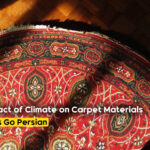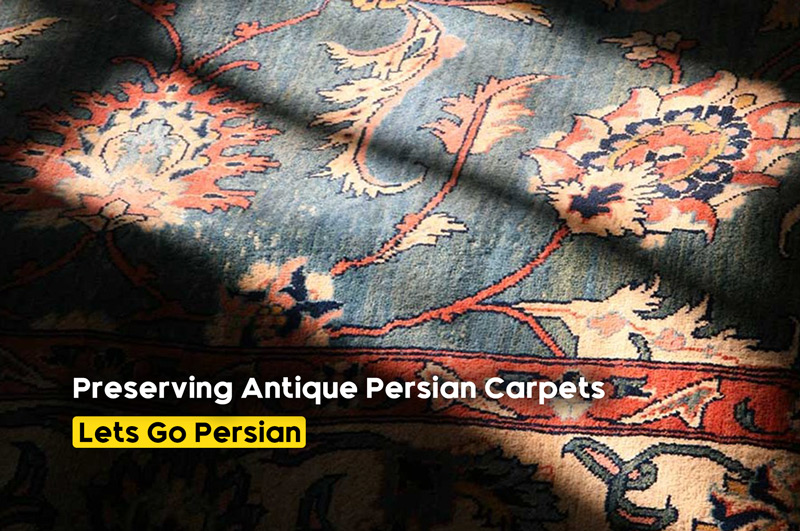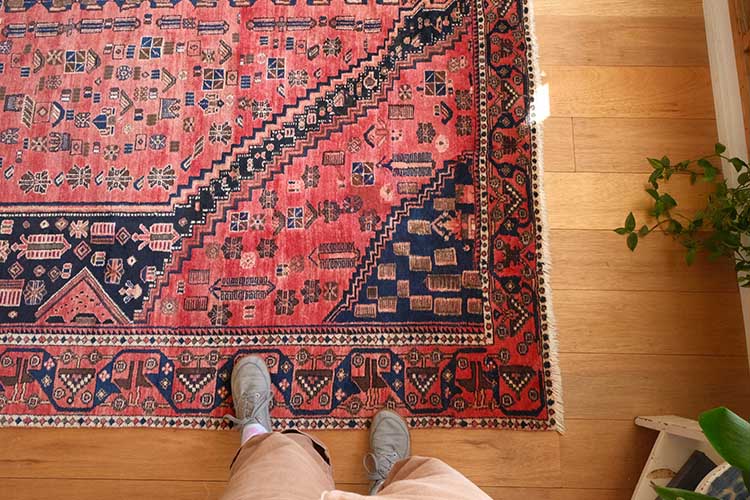
The Role of Persian Carpets in Global Trade History

The Impact of Climate on Carpet Materials and Longevity
Antique Persian carpets are more than just decorative pieces; they are priceless works of art and cultural artifacts, often passed down through generations. As valuable heirlooms, they require proper care and attention to preserve their beauty and craftsmanship. Whether you are a collector or a homeowner with an antique Persian carpet, understanding how to properly maintain and restore these treasures is essential to ensure their longevity. In this guide, we’ll explore effective methods for preserving antique Persian carpets, covering everything from routine care to professional restoration.

Preserving Antique Persian Carpets
1. Routine Care: Daily Maintenance of Antique Persian Carpets
Regular Vacuuming
Regular vacuuming is essential for keeping your antique Persian carpet clean and free of dust, dirt, and debris, which can become embedded in the fibers and damage the carpet over time.
- Use a Soft Brush Attachment: When vacuuming an antique carpet, use a vacuum with a soft brush attachment to avoid damaging the delicate fibers. Do not use a vacuum with harsh bristles or a beater bar, as these can pull at the fibers and cause wear.
- Vacuum Gently: Always vacuum in the direction of the pile, moving gently across the surface. For especially delicate or silk carpets, it may be better to use a hand-held vacuum or to shake the carpet outside to remove dust.
Rotating the Carpet
Rotate the carpet regularly to ensure even wear. Over time, certain areas of the carpet, especially those exposed to foot traffic or direct sunlight, can fade or wear out more quickly than others.
- Rotate Every 6 to 12 Months: Rotating the carpet every 6 to 12 months helps distribute wear evenly, preventing uneven fading and prolonging the life of the carpet.
Protecting from Sunlight
Direct sunlight can cause the colors of an antique Persian carpet to fade over time. Persian carpets are typically dyed with natural dyes that, while rich and long-lasting, are susceptible to UV damage.
- Use Curtains or Blinds: If the carpet is placed in a sunlit room, consider using curtains or blinds to block out direct sunlight during peak hours.
- UV-Blocking Window Films: Alternatively, install UV-blocking window films on windows to protect your carpet from harmful rays while allowing natural light into the room.

Preserving Antique Persian Carpets
2. Professional Cleaning for Antique Persian Carpets
When to Seek Professional Help
While regular vacuuming and light cleaning can be done at home, professional cleaning is necessary for deeper maintenance, especially when dealing with antique Persian carpets. Professional cleaning ensures that the delicate fibers and dyes of the carpet are preserved, without causing damage.
- Every 1 to 3 Years: It’s recommended to have your antique Persian carpet professionally cleaned every 1 to 3 years, depending on its location and use.
- Spot Cleaning for Stains: In the event of spills or stains, blot the area immediately with a clean cloth to absorb the liquid. Avoid rubbing, as this can push the stain deeper into the fibers. For stubborn stains, seek professional help to avoid damaging the carpet.
Choosing the Right Professional Cleaner
Not all carpet cleaners are equipped to handle antique Persian carpets. It’s important to find a cleaner who specializes in antique and hand-woven carpets and understands how to properly care for delicate materials and natural dyes.
- Ask for References: When selecting a cleaner, ask for references and ensure they have experience with antique Persian carpets. Reputable cleaners should be able to provide testimonials or examples of their previous work.
- Gentle Cleaning Solutions: Ensure that the cleaner uses gentle, pH-neutral cleaning solutions and avoids harsh chemicals that can damage the natural fibers and dyes of the carpet.
3. Restoration: Repairing Damaged Antique Persian Carpets
Identifying Damage
Over time, even well-maintained antique Persian carpets may suffer from wear and tear, including fraying edges, holes, and thinning piles. Recognizing early signs of damage can help you address these issues before they worsen.
- Fraying and Unraveling: Look for signs of fraying along the edges or areas where the carpet may be starting to unravel. This is common in high-traffic areas or carpets with fragile edges.
- Worn or Bare Patches: Check for areas where the pile has thinned or worn down, particularly in high-traffic zones or areas exposed to heavy use.
Professional Restoration
Restoring an antique Persian carpet requires a high level of skill and expertise. Professional restorers can repair damage while preserving the carpet’s original design and craftsmanship. Common restoration methods include reweaving, re-knotting, and darning.
- Reweaving: If sections of the carpet have become worn or damaged, professional weavers can reweave these areas by hand, matching the original design and colors as closely as possible.
- Edge Binding: Fraying edges can be stabilized and restored with hand-stitched bindings, preventing further unraveling and ensuring the carpet’s longevity.
- Fringe Repair: Many antique Persian carpets have delicate fringes, which can become worn over time. Professional restorers can repair or replace the fringe, matching the original style and materials.
Avoiding DIY Repairs
While it may be tempting to attempt minor repairs yourself, it’s important to avoid DIY fixes for antique carpets. Without proper knowledge and tools, amateur repairs can cause further damage and reduce the value of the carpet.
- Leave Re-Knotting to Experts: Re-knotting damaged areas or attempting to patch the carpet should be left to professionals. Improper techniques can result in mismatched colors, uneven surfaces, and compromised structure.

Preserving Antique Persian Carpets
4. Storing Antique Persian Carpets
Proper Storage Techniques
If you need to store your antique Persian carpet for an extended period, it’s essential to take the proper steps to prevent damage from moisture, pests, and improper handling.
- Clean Before Storing: Ensure that the carpet is professionally cleaned before storing it. Dust, dirt, or stains left on the carpet can attract pests or become more difficult to remove over time.
- Roll the Carpet: When storing, always roll the carpet instead of folding it to prevent creases and damage to the pile. Roll the carpet with the pile facing inward to protect the surface.
- Use Acid-Free Paper: Place acid-free paper between the rolled carpet and any other surfaces to protect it from dust and potential discoloration.
Avoiding Moisture and Pests
Moisture and pests are the two main threats to carpets in storage. Moths, in particular, are attracted to natural fibers like wool and silk.
- Use Moth Repellents: Place mothballs or natural moth repellents like cedar blocks near the carpet to protect it from pests. Avoid placing mothballs directly on the carpet, as the chemicals can damage the fibers.
- Store in a Dry, Cool Place: Keep the carpet in a climate-controlled environment with low humidity. Avoid storing the carpet in basements, attics, or areas prone to moisture, as this can lead to mold and mildew growth.
5. Handling Antique Persian Carpets
Proper Handling to Prevent Damage
Antique Persian carpets are fragile and should be handled with care, especially when moving or cleaning them.
- Lift, Don’t Drag: When moving the carpet, always lift it rather than dragging it across the floor. Dragging can cause the fibers to stretch, tear, or fray, particularly along the edges.
- Use Carpet Pads: Placing a carpet pad under your antique Persian carpet can help protect it from wear, provide cushioning, and prevent slipping. Carpet pads also allow air circulation beneath the carpet, which can reduce the buildup of dust and moisture.
Displaying Antique Carpets
Many collectors choose to display antique Persian carpets on the wall, especially delicate or rare pieces that may not be suitable for high-traffic areas.
- Proper Wall Hanging: When hanging an antique Persian carpet, use a velvet or cotton sleeve sewn onto the back of the carpet, through which a rod or pole can be inserted. This will help distribute the carpet’s weight evenly and prevent damage to the fibers.
- Avoid Direct Light: Whether placed on the floor or hung on the wall, avoid exposing your carpet to direct sunlight, as it can cause the colors to fade over time.
Conclusion
Antique Persian carpets are valuable cultural treasures that require diligent care and proper restoration to maintain their beauty and integrity over time. From routine maintenance like vacuuming and rotation to seeking professional cleaning and restoration services, every step you take to protect your carpet will ensure that it continues to be a source of pride for generations to come. By handling, storing, and displaying these carpets with care, you can preserve their rich history and craftsmanship, keeping them as vibrant and intact as they were when first woven.



















